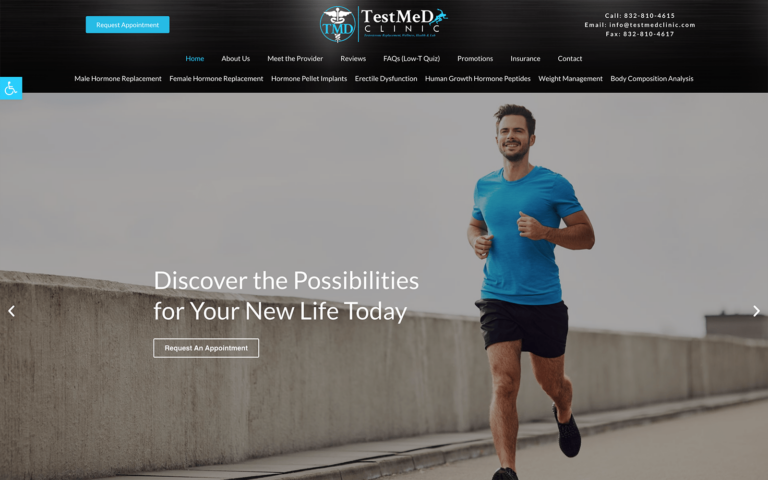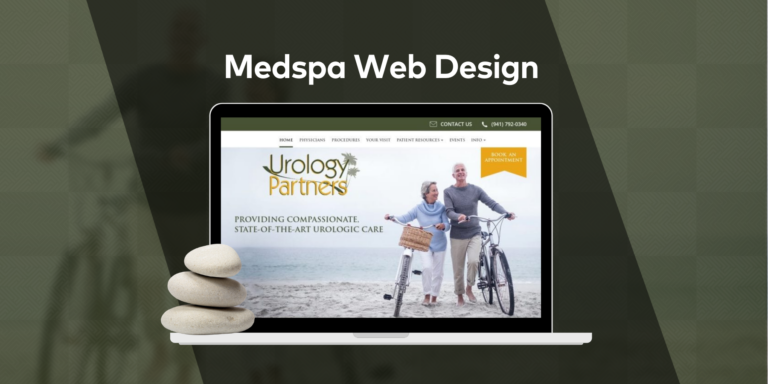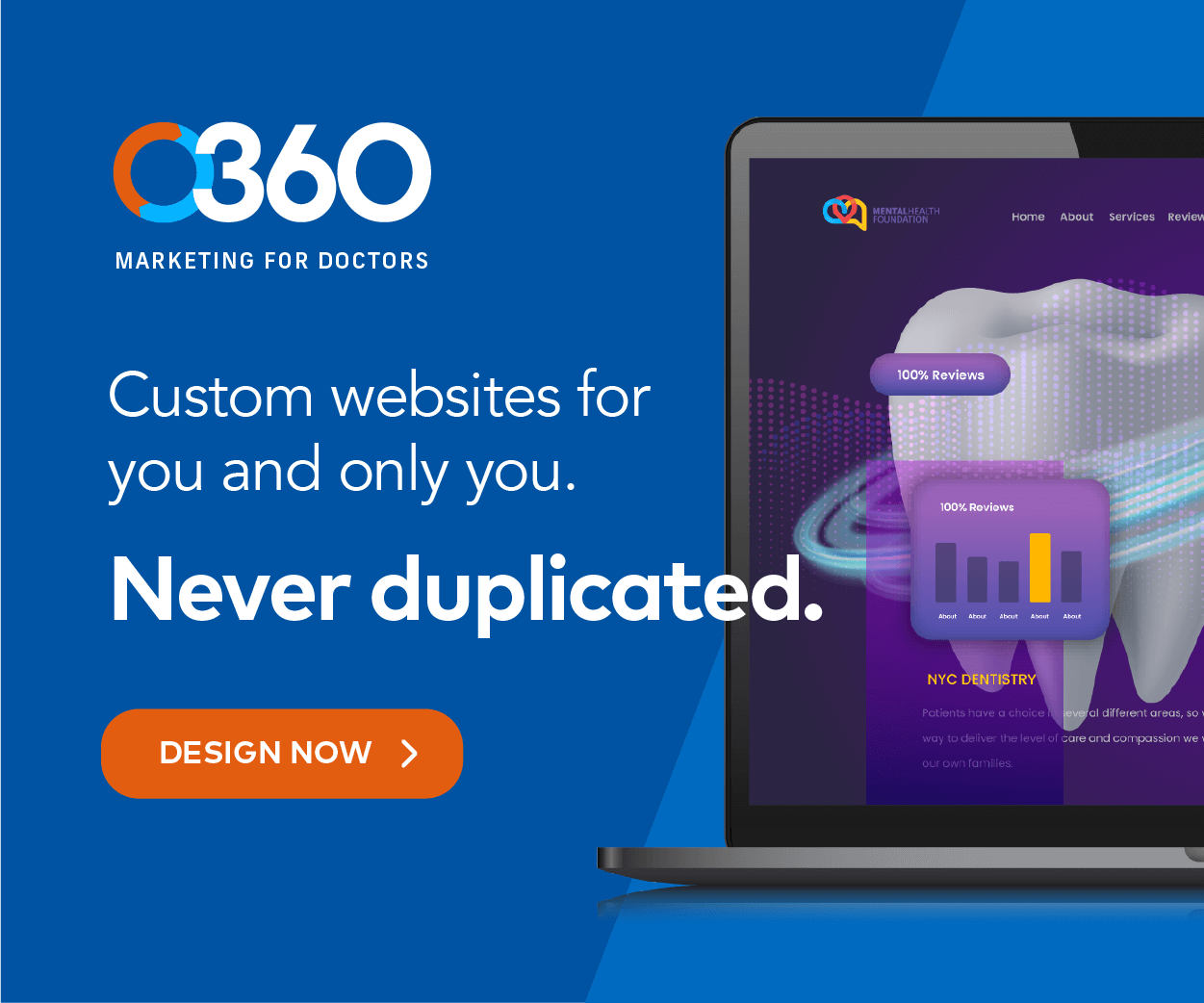
When looking at the top marketing campaign trends this year, more and more efforts are being pushed towards online engagement. Today, over a billion daily Google searches are health-related, and at least one in ten people turn to social media for medical advice. People want digital solutions, and with the expansive onset of artificial intelligence, social media management, and content creation on the horizon, having a successful campaign that meets those needs is now more vital than ever.
But if your marketing campaign isn’t managed right, it can backfire. A good marketing campaign isn’t just about promoting your services to potential patients— but it’s also about building trust, loyalty, and credibility with your current and future patients. If you’re looking to optimize your strategy and craft your message, the best resources for a successful healthcare campaign can be found in how the biggest names in healthcare achieve it.
The Steps Towards Building a Healthcare Campaign
Creating a healthcare marketing campaign is similar to preparing a patient treatment plan. It requires strategic planning, precision, and a deep understanding of the end goal. Constructing a campaign means breaking down steps to help you reach your goals and better resonate with your audience. Each step listed below is important to your campaign’s overall effectiveness.
Define Your Goals
The first step in creating an eye-catching marketing campaign is clearly defining your goal. These goals can vary depending on your specific needs but can include objectives such as increasing patient engagement, promoting new services, or improving patient education about health management. Your goals should be specific, measurable, achievable, relevant, and time-bound (SMART). An example of this would be rather than simply aiming to increase patient visits to your practice, a more achievable goal would be to increase patient visits by 30% within the next six months through web design and online booking advertisements.
Identify Your Audience
Learning about who your campaign is for is also important, as your audience could be broad or more specific depending on the conditions you treat and the services you provide. Knowing your audience can help you narrow your message and decide how to reach them effectively. Consider age, gender, location, and how they consume information. The more you understand your audience’s preferences and behaviors, the more effective your campaign can be.
Craft Your Message
Once your goals are defined and you know your audience, you must craft a compelling message. Your message should clearly communicate your healthcare services’ value, resonate with your audience’s needs, and address how your services can benefit them. Try to ensure that your message is consistent across all of your platforms, but tailor the message to fit the medium, such as short messages for X (known as Twitter) and longer posts for platforms such as blogging websites and LinkedIn.
Choose Your Channels
The next step in developing your campaign is to choose the channels to reach your audience. This decision relies heavily on where your audience spends most of their time and what content they engage with most. Some examples of these channels include:
- Social Media: Platforms like Facebook, Instagram, and Twitter are excellent for interactive engagement and community-building.
- Email Marketing: For delivering personalized content directly to patients who have opted to receive your updates.
- Content Marketing: Including blogs, articles, and patient stories on your website helps improve SEO and is a resource for patients seeking information.
- Video Marketing: Videos can effectively explain complex medical procedures or showcase patient testimonials.
Each of these channels offers different features and caters to different consumer behaviors, meaning choosing the platforms that work best with your goals, budget, and audience habits is essential.
Measure Your Results
It’s important to track your campaign’s effectiveness once it’s implemented. This involves monitoring key performance indicators, engagement rates, conversion rates, and ROI. Some tools, such as Google Analytics, can help track and provide insights into how your campaign is performing and where your campaign can improve. Tracking these metrics can help you optimize your campaign, ensure it performs well, and adjust to your audience’s needs.
The Tools Used To Build Your Campaign From Start to Finish

Not only is establishing the basics of your campaign important, but having the right tools also matters. Having effective tools that aid in developing, launching, and managing a healthcare marketing campaign can help increase your efficiency, help save on your budget, and provide a more professional, streamlined approach to your campaign. A successful campaign works when you have the right tools to bring it to life.
Here are some of the best marketing campaign tools for building your campaign:
Web Design
A well-designed website provides the foundation for your brand identity and digital presence online. Your website should be user-friendly, mobile-responsive, and visually appealing to people. The goal of having a beautifully built website is to ensure that your visitors have the best user experience possible. Tools such as WordPress, Wix, or Squarespace offer templates and plugins that can be used for healthcare websites and can include features such as online scheduling, patient portals, and service descriptions to help provide the best first impression of your practice.
Medical SEO
Search engine optimization can make your website visible in search engine results. Medical SEO works to optimize your website content with relevant keywords, meta descriptions, and backlinks to improve your website’s ranking. Search engine optimization is a specialization in itself, and depending on the keywords you use, tools such as Moz, SEMrush, or Ahrefs can help analyze your SEO performance and discover areas for improvement. You can use SEO to gain more organic traffic to your website through these methods.
Digital Advertisements
Digital advertisements boost the visibility of your healthcare services. These advertisements work on platforms such as Google Ads or Facebook Ads to target specific demographics, geographic areas, and user behaviors, ensuring your ads are shown to the most relevant audience. These tools provide an in-depth analysis of how your advertisements are performing, and through these tools, can help you adjust your strategy.
Video Marketing
Videos are considered a powerful way for companies to engage with audiences, and for the healthcare industry, it’s no different. Media platforms such as YouTube and Vimeo are popular choices for hosting video content and creating professional videos can significantly increase your patient’s engagement with your website and help make your website more approachable and trustworthy.
Tracking and Analytics
One of the most important aspects of a campaign is how to measure its effectiveness. Measuring the performance of your campaign across different channels means you’ll be able to gain insight into user behavior, website traffic, and conversion rates to your practice. Programs such as Google Analytics can provide these insights and help you regularly analyze the data to learn what’s working, what’s not, and where to allocate your resources for the best return on investment.
Five Healthcare Marketing Examples That Just Work
Some of the best ways to learn how to create a successful marketing campaign include real-life examples. By learning from well-known healthcare institutions, you’ll be able to see the different strategies and outcomes they were able to produce based on their approaches and marketing goals. Each example listed below will highlight how they’ve made their healthcare marketing campaign effective:
New York Presbyterian Hospital – Campaign: Patient Stories
New York Presbyterian Hospital utilized the power of patient testimonials in its “Patient Stories” campaign. This initiative featured real-life narratives from past patients detailing their healthcare journeys, challenges, and outcomes due to the hospital’s care.
The campaign focused on humanizing their services, showcasing their commitment to care by sharing their patient’s experiences. They worked with engaging videos hosted on their website and social media. They used video marketing and social media management to widen their reach and reinforce their reputation as a leading healthcare provider.
UnitedHealthcare – Campaign: We Dare You
UnitedHealthcare’s “We Dare You” campaign engaged audiences with monthly challenges encouraging followers to make small, health-conscious decisions. The campaign utilized social media to interact directly with participants, posting challenges and encouraging users to share their progress.
The interactive nature of their campaign focused on using the dynamic environment of social media to make their campaign accessible and fun. The campaign used direct calls to action and digital advertisements to enhance and reach their engagement goals.
The Mayo Clinic – Campaign: Sharing Mayo Clinic Blog
The Mayo Clinic’s “Sharing Mayo Clinic” blog allows patients and staff to share their stories and experiences. The blog features a variety of posts, from breakthrough medical treatments to personal patient stories of courage and recovery.
By constantly posting informative and emotionally resonant content, their approach worked to drive organic traffic to their website. Their campaign also used SEO to improve their rankings and used their blog as the main marketing tool to educate and inform people. By focusing specifically on directing users to their blog, they were able to maintain their reputation consistently.
Carilion Clinic – Campaign: #YESMAMM
The #YESMAMM campaign by Carilion Clinic aimed to promote mammography and breast cancer awareness through social media and digital platforms. This campaign encouraged women to pledge to have mammograms and share information across their networks.
Their campaign used social media as its main distributor, and its focus was to raise awareness and participation. It used digital advertisements, interactive content such as quizzes, and informative social media posts to help educate women and engage with their audience.
Arkansas Children’s Hospital – Campaign: #100DeadliestDays
The #100DeadliestDays campaign by Arkansas Children’s Hospital focused on the summer months, which statistically see a higher rate of injuries and accidents in children. The campaign used blogs, social media posts, and community events to educate parents on safety and preventative measures.
Arkansas Children’s Hospital used a multi-channel approach to ensure that the message was communicated across various platforms to improve its reach and engagement. The campaign used time-sensitive topics and content that provided a sense of urgency for the message’s importance to help address its audience’s concerns related to health and wellbeing.
Each of these campaigns used various digital tools and platforms to reach out and engage with its target audience. Each had different strategies and approaches based on the topic and audience it was speaking to. These companies were ultimately successful in their campaigns because they understood their campaign the most.














